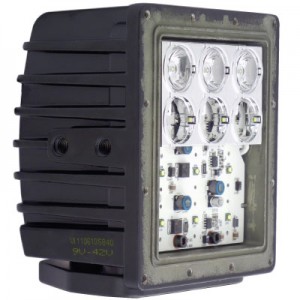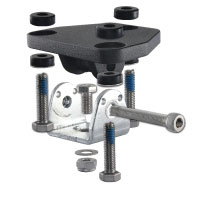7 Tips for Buying the Best Quality LED Vehicle Lights
 The performance, reliabilty and value of an LED light comes down to quality componentry, proven design and world class manufacturing standards[/caption]
The performance, reliabilty and value of an LED light comes down to quality componentry, proven design and world class manufacturing standards[/caption]
When it comes LED drive lights, lightbars and worklights for use in automotive, offroad and industrial applications, there are many options available from manufacturers all around the world. In this article we aim to provide a practical guide to help wholesalers, retailers and end users like fleet managers choose the right LED lighting range.
Let’s start to answer the question by asking what do your customers want?
What Your Customers Want
If it is for low-use and on road (eg on a passenger vehicle) then they want reasonable performance and reliability at an attractive price.
In contrast, if they are used regularly for work where downtime costs money, and they are relied on in harsh conditions like off road, construction or mining, then maximum performance and reliability are essential.
What your customers don’t want
‘Hi. I’d like to buy an unreliable, poorly manufactured, and cheap LED driving light that will most likely fail before the claimed warranty period. Do you sell those?’
How many times have you been asked this question? Not too many we suspect.
Customers don’t want a product that fails, and it is impossible to build your business around such a product.
How do you choose the best LED lighting range to offer your customers so that:
- They are happy with your product and service
- Your reputation as a trusted supplier continues to grow
- You profit from the supply
Here are seven practical insights in LED light reliability and performance to help you choose the right LED lighting range for your business and your customers.
1. The LED Light’s Weight (Heat Management)
Whilst LED light beams are cool there is substantial waste heat produced within the LED itself during the conversion of electricity into light, and heat damages the LED itself. So all LED lights require good heat dispassion, and a quality LED light requires a good amount of aluminium and a well designed heat sink to achieve this. A thin or small heat sink may provide reasonable surface area in less weight, but it can’t transfer enough heat for the removal.
Only active cooling (eg, fan based) provides an alternative to a robust heat sink. Some China based product provides 12-20W lights in very low weight that make them feel like plastic. These products won’t perform well even in a small span of time.
2. The LED Chip
There are many LED chip manufacturers in the world but the highest quality for longer life and reliability typically come from South Korean, US, European and Japanese based manufacturers. A higher quality chip will generally be larger, providing more light output and better stability against current variations. The downside to this is that they will cost more to produce.
Conversely the cheaper LEDs commonly found in China sourced product will be smaller and provide less light and stability. This will lead to a higher and faster failure rate. Note that ceramic COB lights are totally different in terms of size as they use multiple small chips to provide more lights and stability.
LED Binning – Ensuring LED Chip Quality and Consistency
Binning is the physical sorting of LED lamps of similar “brightness” and “colour”. During production, LEDs will vary in colour, flux and forward voltage even when from the same production batch. The differences are significant and the human eye can detect very small differences in light and colour. As a result LEDs need to be measured and delivered to the market by the LED chip manufacturers in subclasses or groups called bins (‘Bin Codes’ are used as the reference number for these). This approach also makes it possible for LED light manufacturers to re-order LEDs from the chip manufacturers that match the original specifications of their light.
The individual bins are then priced and sold commercially based on desirability and availability. So different LED light brands can state the same LED specification for their light eg “5W CREE LED” but they may still be very different in terms of light quality due to the different Bin Codes of the LED chips used in their lights.
3. The LED Light’s Power supply
The power supply is the heart of an LED light. As a type of semiconductor LEDs need to be driven carefully with a constant current DC supply to ensure a longer lifespan. An unreliable LED power supply driver will be manufactured with lower quality components and lower life capacitors.
Non-branded Chinese LED drivers often use regular capacitors, which work for only 1,000 hours at higher temperatures. In contrast quality manufacturers like Vision X build their power supplies to actually meet their stated lifespans of 50,000 hours.
4. LED Light quality and consistency
Another critical component that impacts quality and cost in an LED is rare earth phosphor. Cheap producers will tend to use low quality phosphor to keep costs down, but this causes light colour inconsistency and reduces the ‘quality’ of the light’s colour. You will see this in LED drive lights, lightbars or work lights that provide slightly different shades of white colour.
In practical terms this can affect visibility and clarity when driving. Being able to maintain consistent light colour is a very challenging task for LED producers, so manufacturing quality standards also affect the result. The Color Rendering Index (CRI) is a measure of light quality, and a decent LED light should have a CRI above 85. A higher CRI requires the use of high quality phosphor.
5. LED Light Optics – Lens and Reflector
The optics refers to the lens and reflector. These combine to determine the ‘shape’ and diffusion of the light emitted with typical beam patterns being spot elliptical and flood beams.
The reflector also serves to influence the distance the light displays to. Higher quality optics will provide the optimal light pattern and distance when driving or working.
6. The Construction of the LED Light
How the light is constructed and the materials used is also critical. Inspect the design, look, feel and strength of the product to assess construction quality. If paint or powder coating is not applied well, or other discrepancies exist it is likely that the internal construction has also been rushed.
[caption id="attachment_1058" align="alignright" width="200"] The mount system needs to manage constant and often extreme vibration[/caption]
The mount system needs to manage constant and often extreme vibration[/caption]
Check that the mounting system caters for the constant and sometimes extreme vibration that lights will need to manage. If it is a quality build it will be heavier, to better manage heat dissipation, so the mount system needs to be very robust, especially for industrial applications.
Low cost manufacturers, often based in China, will rely on producing a high quantity of products quickly to be able to compete on price. This fast & careless production greatly increases the chances of early product failure.
7. Warranty Claims and Technical Support
Manufacturers will often provide extended warranty claims on the assumption that most customers won’t actually enforce them in the event a product fails. They also make claims regarding performance such as IP rating, light output etc without actually having the independent testing to support them.
Whether a manufacturer will commit to their warranty claim and whether they can provide independent evidence of important performance claims tells you a lot about what goes on during manufacture and what goes into their product.
Trust the manufacturers that stand by their warranty and can provide you independent product test results.
Here is an example from Vision X of what independent test results should look like:
Vision X LED Lighting
Vision X provide a range of LED, HID and halogen vehicle lights for general and heavy duty applications. Their US designed and South Korean manufacturing processes ensure world class component and build quality. View the full range in their latest LED Vehicle Lighting catalogue here. Contact merchlin to find out more about becoming a Vision X distributor in your region.
